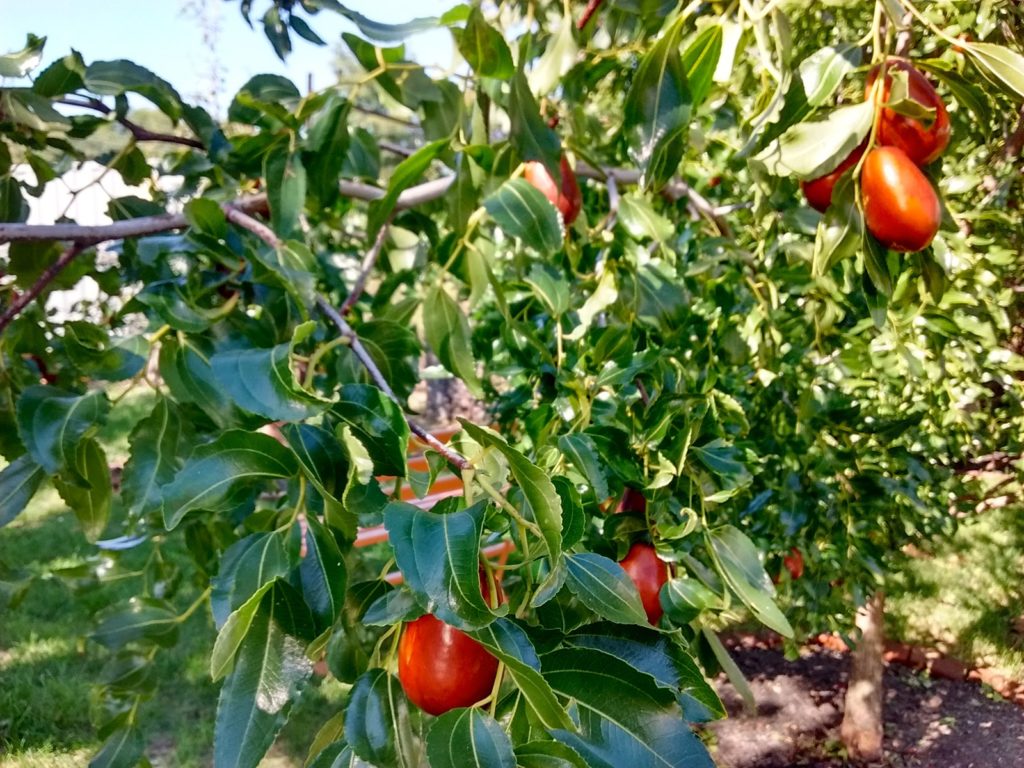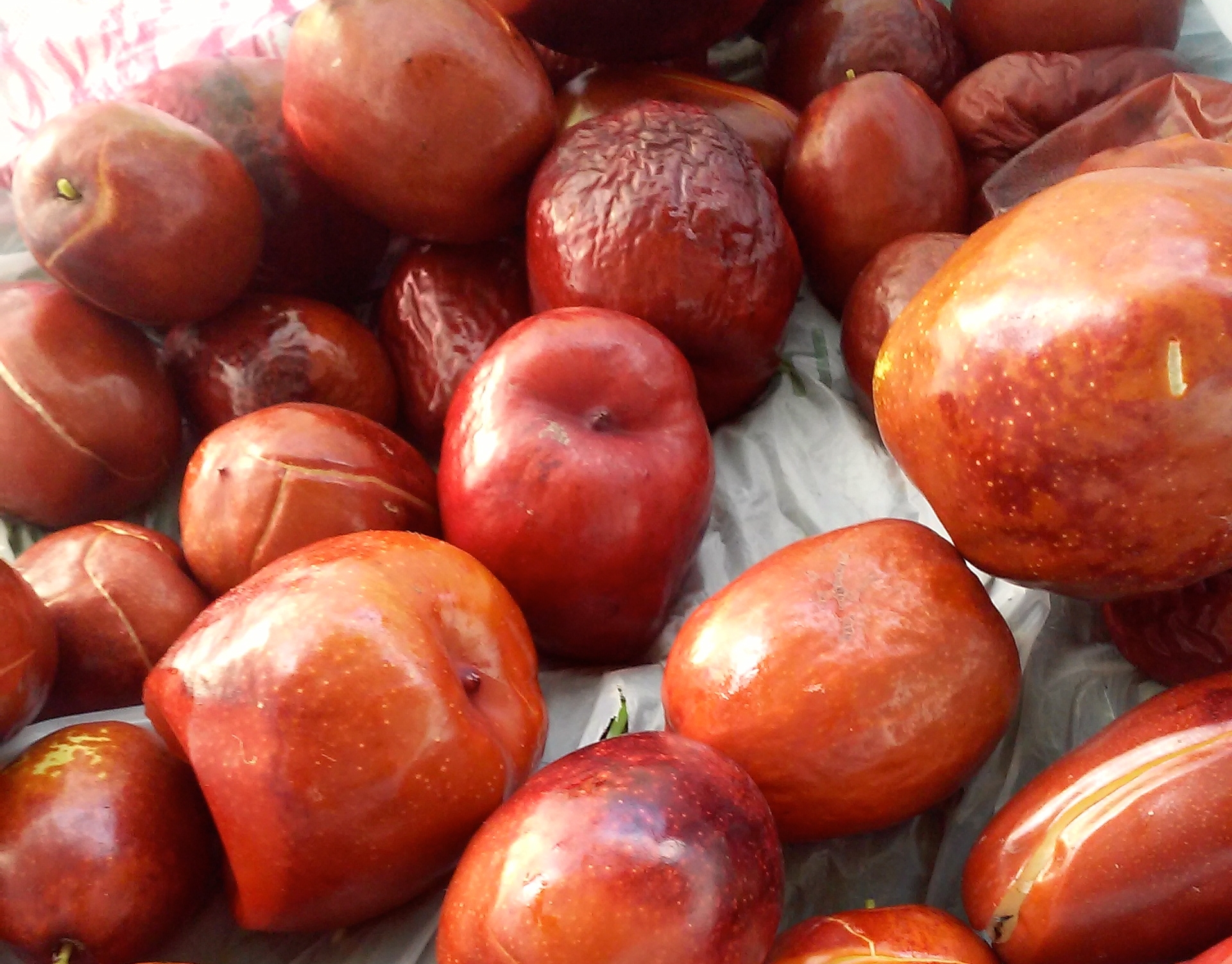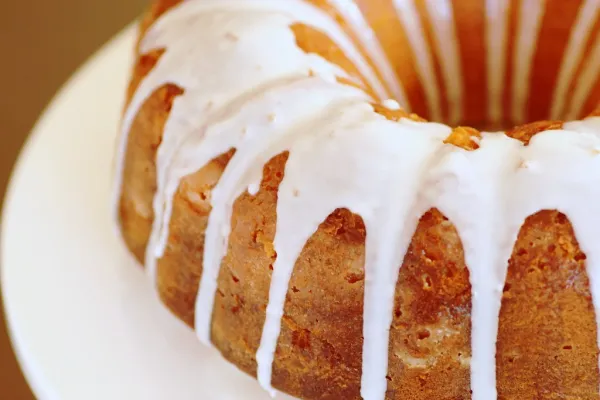
Jujubes have become a beloved part of North America’s uncommon fruit tree group. We have embraced them in our Philly orchards due to their adaptability to our zone 7 climate and general resistance to pests and diseases, allowing us to enjoy an extended harvest season along with their unique taste. If you’re unfamiliar with this fruit, picture a fruit larger than a cherry but smaller than a plum with smooth skin that changes from green to yellow-green, then to rich mahogany when fully mature.
CULTURAL CONTEXT
Jujubes are native to China and have been cultivated for over 4,000 years resulting in over 400 existing varieties. Most folks associate it’s flavor with the sweetness of a date, hence their nickname “The Chinese or Korean Red Date.” But this sweetness only comes with maturity as it ripens and is dried, which is how the plant was originally eaten before being cultivated to be eaten fresh. In fact, many North American growers were initially unaware that the Lang variety was explicitly developed in Asia for drying, resulting in large crops of jujubes with dry, mealy flesh when grown for eating. However, new cultivars were introduced from China specifically for fresh eating, helping growers distinguish between the two.

LI AND LANG VARIETIES
If you’re searching for Jujubes in Philly, you’ll mainly find the Li and Lang varieties, a popular commercial cultivar imported directly from China by Frank Meyer.
When you bite into a Li Jujube in the green stage, you’ll be surprised by the satisfying snap-like quality that reminds you of biting into a fresh apple. Its flesh is not only crisp but also airy and semi-water-like, making for a unique and refreshing taste. Their sweet flavor is balanced with lower acidity, making them an ideal snack for those with a sweet tooth and best for “fresh eating jujubes.”
On the other hand, when the Lang variety matures, the skin starts to wrinkle while the flesh becomes chewy, almost like a date. And when dried, they become a natural candy with high sugar content and a subtly earthy, caramel-like taste. Making them ideal for “dried jujubes.”
So, if you’re not familiar with the cultural history of the jujube, it can be challenging to capture the best of its flavor. But fear not, we’ve included some yummy jujube recipes for dried and fresh varieties!
Enjoy!
RECIPES:
Whether dry or fresh, you can find these ancient fruits in many Chinese and Korean cuisines, ranging from teas to cakes, soups, and more! Check them out below.
Note: To dry your own Jujubes, check out our how-to here or find them pre dried at your local Asian grocer!
DAILY TONIC WITH JUJUBES AND GOJI BERRIES
By: Michelle Sam
Simmering Ingredients:
- 1 1/2 liters of water
- 1 tsp goji berries
- 4 jujube Chinese Red Dates
- 1 fresh lemongrass
- 1 slice of fresh ginger
- 3 cardamon pods
- 10 grams fennel tops
- 4 peppercorns
- 20 grams fresh cut lemon (about half a lemon)
Additional Ingredients:
- ⅓ liter apple juice / white grape juice
- 2 Tbsp apple cider vinegar
- 2 Tbsp honey
Directions:
- In a medium saucepan, add water, jujube and goji berries, then bring water to a boil
- When water is at a rolling boil, add the rest of the simmering ingredients, cover with a lid and allow to simmer for 5 minutes.
- Turn off stove and allow to sit and steep for 10 minutes.
- Pour the liquid through a sieve to remove all the ingredients.
- Add back the jujubes and goji berries to the water mixture.
- Add the rest of the additional ingredients to the water mixture to create the tonic.
- Refrigerate until chilled
JUJUBE DATE & ALMOND BUNDT CAKE
By: Jessica’s Dinner Party
Ingredients
Cake
- 1 cup (220g) jujube paste (from about 3 1/4 cup of dried whole jujubes)
- 2 cups (250g) all purpose flour
- 3/4 cup (72g) almond meal
- 1 teaspoon (6g) baking powder
- 1/2 teaspoons (2.5g) baking soda
- 1/2 teaspoon ginger
- 1/8 teaspoon nutmeg
- 1 teaspoon cinnamon
- 1 cup (227g) butter at room temperature
- 1 cup (220g) light brown sugar
- 1/2 cup (170g) honey
- 1/2 teaspoon (1.5 g) salt
- 3 large eggs (room temperature)
- 2 1/2 teaspoon (10g) vanilla extract
- 1 cup (240g) buttermilk
Glaze
- 2 1/2 cup (300g) powdered sugar
- 5 tablespoons (75g) milk or almond milk
Assembly/ Garnish
- Roughly chopped almonds (optional)
Directions
Cake
- To make the jujube paste, cover the dried whole jujubes in hot water and set aside for 15 to 30 minutes. Drain the water and remove the pits from the jujubes. Puree using a food processor or pass through a sieve.
- Prepare a 10-12 cup bundt pan. Brush the inside of the pan with butter and dust with flour. Tap out any excess flour. Preheat oven to 350 degrees F.
- In a medium bowl, whisk the flour, almond meal, baking powder, baking soda, ginger, nutmeg, and cinnamon together.
- In a separate, larger bowl, beat the butter, brown sugar, honey, and salt together until light and fluffy. Add the eggs one at a time, mixing inbetween each addition, and then add the vanilla extract. Mix in the jujube puree.
- In alternating additions, add the flour and buttermilk. Start by adding about a third of the flour, mix, then add half of the buttermilk. Repeat until all the flour and buttermilk has been mixed in.
- Pour the batter into the prepared bundt pan and bake for 60 to 65 minutes or a cake tester inserted deep into the middle comes out clean. Check the cake midway through baking to make sure the top is not browning too fast. If so, loosely cover the top with aluminum foil. Transfer the cake to a rack. Let cool for 15 minutes, then unmold. Continue to cool on the rack.
Glaze
- Whisk together the powdered sugar and milk until smooth. Add more milk if a thinner consistency is desired.
To Assemble
- 1. Once the bundt has cooled completely, spoon or pour the glaze over.
Notes
- Do not place the bundt pan on top of a baking sheet in the oven. This will cause the bottom of the cake to brown too quickly.
MORE RECIPES
JUJUBE GINGER TEA
FLUFFY MONKEY BREAD WITH JUJUBE SYRUP
SPICED CANDIED JUJUBES
GINSENG CHICKEN SOUP WITH FRESH JUJUBES
This edition of the POP blog prepared by Deja Morgan, Community Outreach Coordinator.
SUPPORT US! If you found this entry useful, informative, or inspiring, please consider a donation of any size to help POP in planting and supporting community orchards in Philadelphia: phillyorchards.org/donate.
DISCLAIMER
The Philadelphia Orchard Project stresses that you should not consume parts of any wild edible plants, herbs, weeds, trees, or bushes until you have verified with your health professional that they are safe for you. As with any new foods that you wish to try, it is best to introduce them slowly into your diet in small amounts.
The information presented on this website is for informational, reference, and educational purposes only and should not be interpreted as a substitute for diagnosis and treatment by a health care professional. Always consult a health care professional or medical doctor when suffering from any health ailment, disease, illness, or injury, or before attempting any traditional or folk remedies. Keep all plants away from children. As with any natural product, they can be toxic if misused.
To the best of our knowledge, the information contained herein is accurate and we have endeavored to provide sources for any borrowed material. Any testimonials on this web site are based on individual results and do not constitute a warranty of safety or guarantee that you will achieve the same results.
Neither the Philadelphia Orchard Project nor its employees, volunteers, or website contributors may be held liable or responsible for any allergy, illness, or injurious effect that any person or animal may suffer as a result of reliance on the information contained on this website nor as a result of the ingestion or use of any of the plants mentioned herein.

